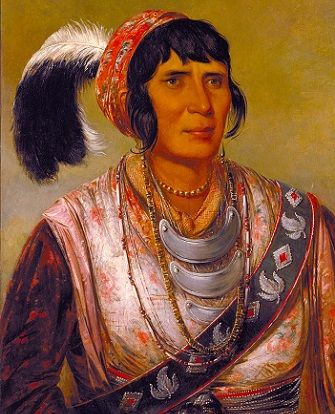
Southeast Indian Facts
Southeastern American Indians, also known as the Indigenous peoples of the Southeastern Woodlands, come primarily from the states of Louisiana, Alabama, Georgia, and parts of Florida. Although there are some discrepancies as to the region's true boundaries, the Atlantic Ocean and the Gulf of Mexico give a rough idea of the eastern and southern boundaries. The list of facts below about the Southeastern Indians gives a general overview of who they were, where they lived, their culture, traditions, what ceremonies they had, and the roles of men and women. There is also a list of many of the tribes located in the Southeast. This information is written for both kids and adults.
Click here for a great selection of Southeast American Indian books on AMAZONFacts about the American Indians of the Southeast
- These Native Americans, like other Indian tribes, were hunters and gatherers. They were also talented farmers. They often lived in the same general area, but were sometimes forced to move to locations where food was most abundant. They supplemented their diet as necessary with wild plants and fungi.
- Corn, squash, and beans were so important as food sources that these Indians had a special name for them. They were called "The Three Sisters". They would mix these three ingredients to make succotash, a tasty vegetable dish.
- With corn being the most important harvest, an annual Green Corn Festival was held each fall. This was one of their most important ceremonies. It was a time for celebration and thanks. Dancing, feasting, fasting, and religious ceremonies, where corn was hung above a fire as a sacred offering, were all part of the festival.
- The Southeast Native Americans organized their villages around chiefdoms that were organized by social class. The chief was at the top of the social order.
- Women and men had distinctly different duties. Women were responsible for domestic life, including cooking, making household items such as baskets, pottery, and clothing, and caring for both young children and the elderly members of the tribe. The men focused on feeding their families by hunting, which sometimes required them to leave their homes for long periods of time. The men also made weapons for war, assisted with the crops, and built various types of shelter.
- Several different types of homes were found within the region. Some of the tribes lived in wig-wam like structures made of logs and sticks, which were then covered over with grass. You could also find thatched-roof houses along with two-story homes covered in tree bark. These Indians often had a winter house and a summer house made of different materials to protect them from the elements.
- The Southeastern Indians liked to wear bright colors when possible. In the warm summer months, the women wore no tops in the cooler months, they wore wool and moss to keep warm.
- The federal government forced many of these southern Indigenous tribes out of their homeland in the early 19th century, but there are still many tribes remaining in their original southeastern homelands today.
List of Southeast American Indian Tribes
- Adai
- Alabama
- Apalachee
- Atakapa
- Avoyel
- Bidai
- Biloxi
- Caddo
- Calusa
- Catawba
- Cheraw
- Cherokee
- Chickasaw
- Chitimacha
- Choctaw
- Coushatta
- Creek
- Houma
- Miccosukee
- Natchez
- Ofo
- Saponi
- Seminole
- Taensa
- Timucua
- Tunica
- Tutelo
- Tuscarora
- Woccon